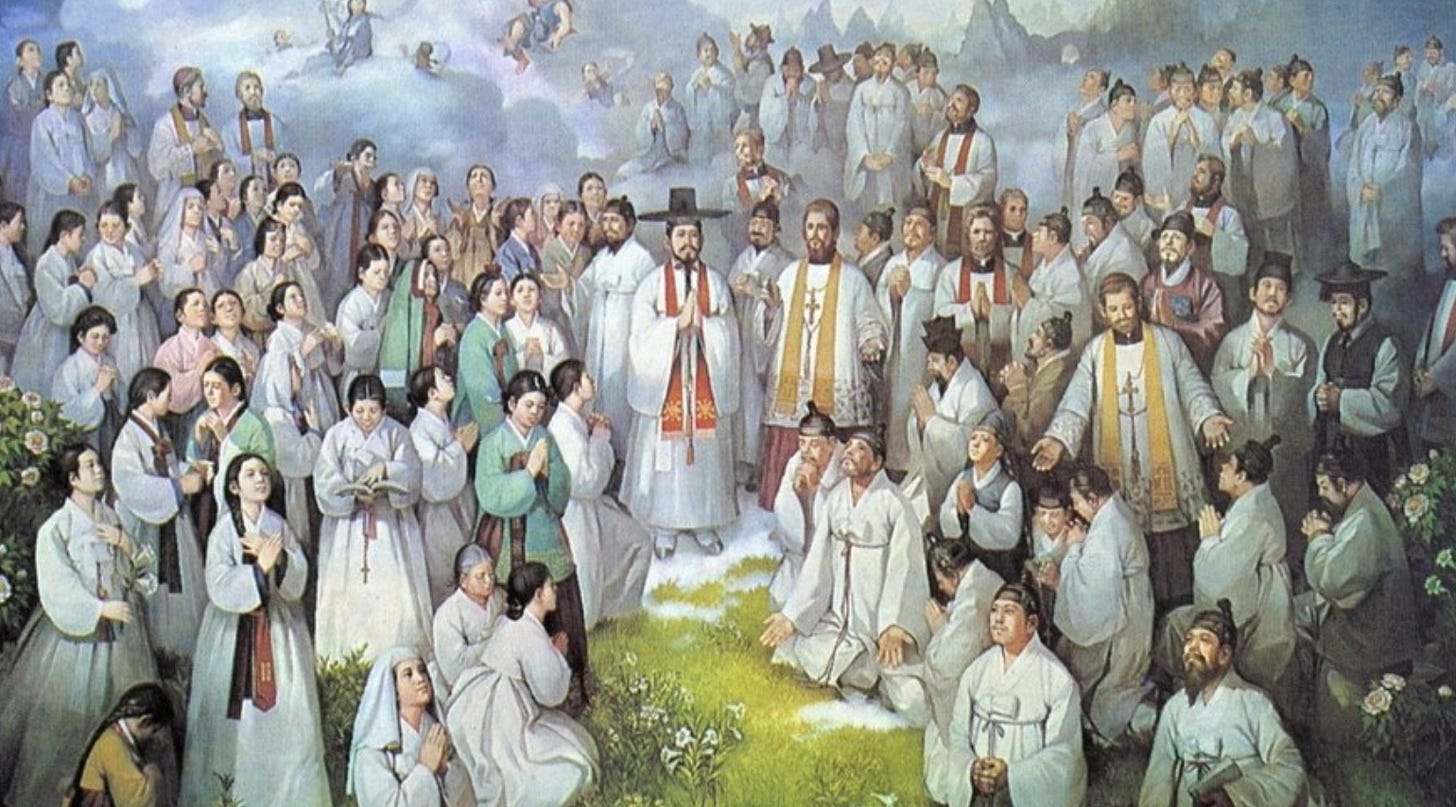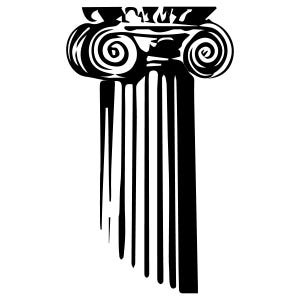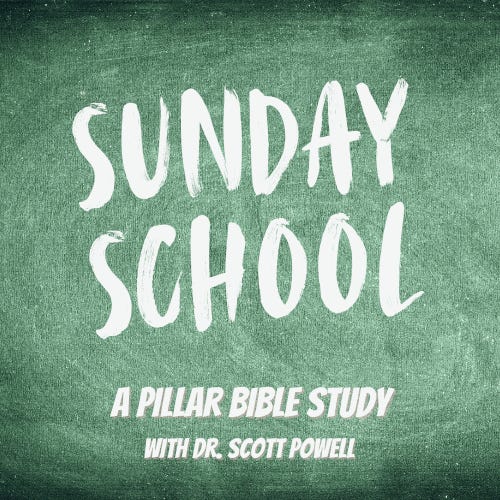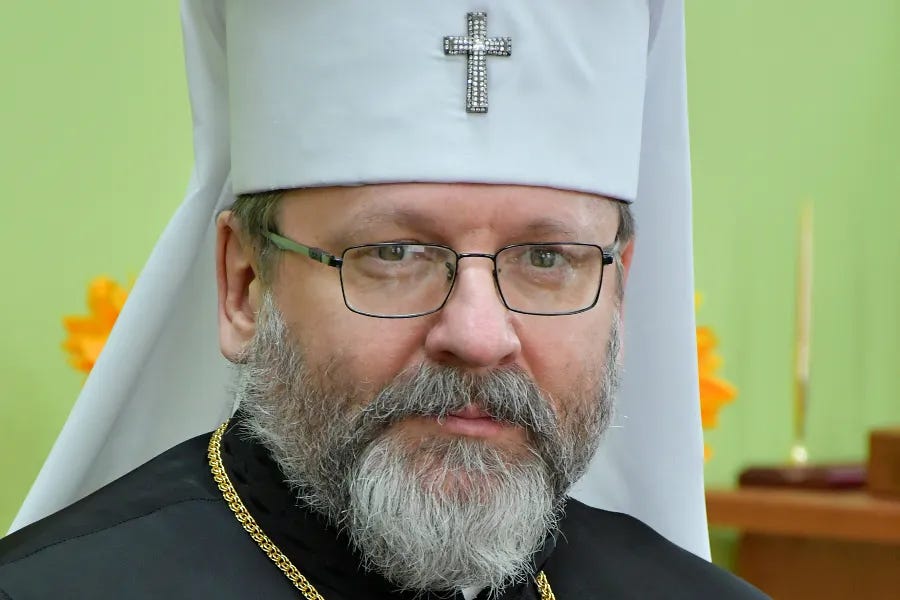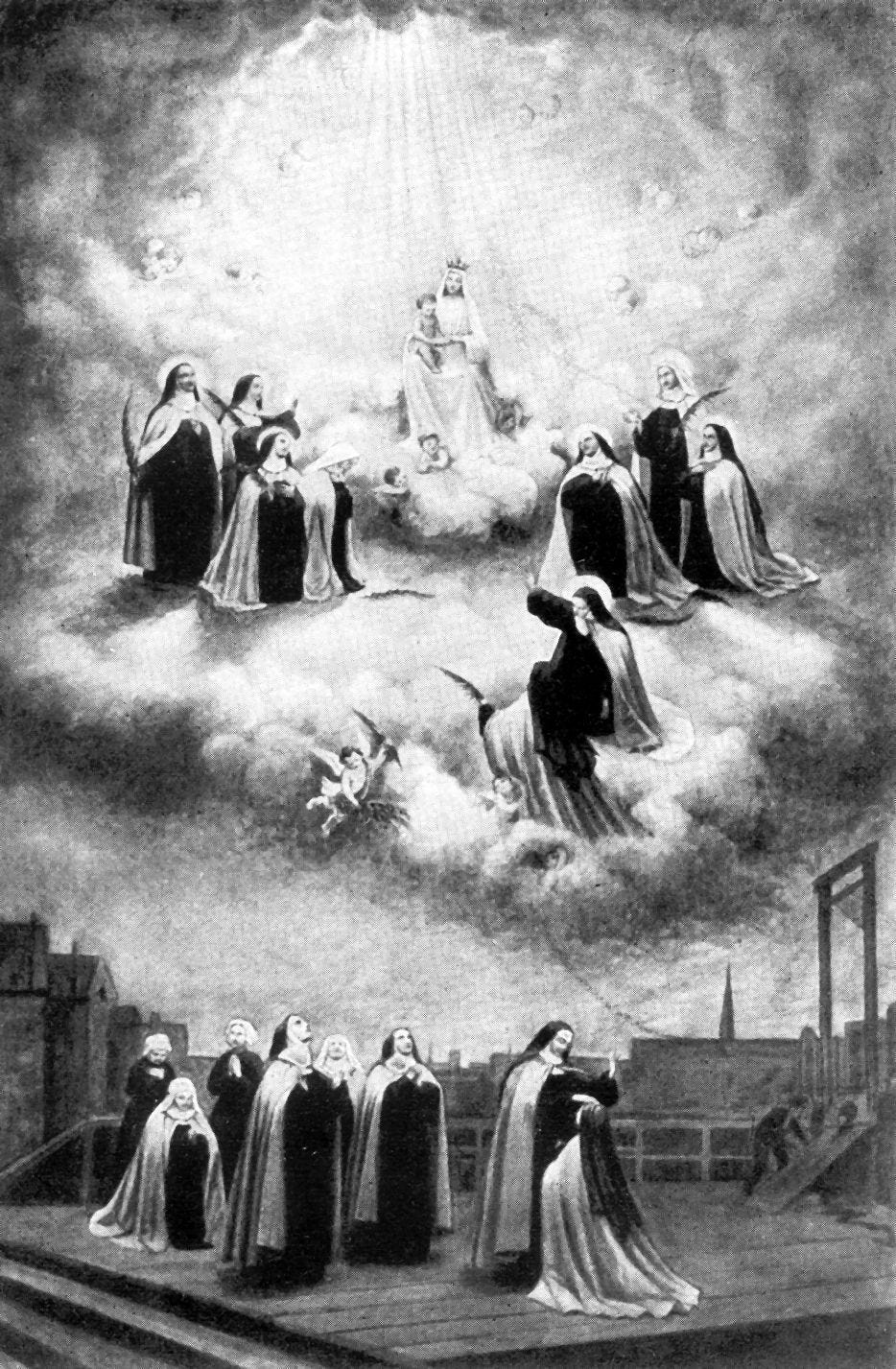Pillar subscribers can listen to Ed read this Pillar Post here: The Pillar TL;DR
Happy Friday friends,
And a happy feast of Saints Andrew Kim Taegon, Korea’s first priest, along with Paul Chong Hasang and their companion martyrs.
I’ve always found the witness of the Korean Church to have a special kind of profundity. So closed was the country to outside influences that Christianity only made it there through the handful of people allowed to go on the annual diplomatic mission to Peking — members of the diplomatic mission got hold of some Christian texts in Chinese and basically converted themselves, seeking baptism on subsequent annual trips before spreading the Gospel on their return.
The repression at home was brutal — some 10,000 Korean Christians were martyred in the course of the first 100 years. When the first priest made it over the border, he found a fledgling Church of 4,000. I'll let you do the math on the survival rates for Christians in the country, though I would add that the priest didn’t last long either.
It strikes me this year that the saintly witness of these Korean Christians was to a Gospel that first came to them from China, of all places. Quite the modern irony, given the state of things.
It’s even more of an irony as we await the inevitable news of the renewal of the Vatican-China deal on the appointment of bishops, due some time in the next few weeks.
We, as Catholics, need the hierarchy of the Church, of this there is no question — and we need the sacraments, and their ministers. Good faith efforts to secure these for Chinese Catholics is not a pointless project or a wasted effort.
But we can learn from the Korean martyrs that we need first the burning urgency of the Gospel, proclaimed with total simplicity and utter sincerity and without compromise.
As the Korean martyrs showed, that is what claims souls for Christ and wins him a new kingdom and raises up priests from among the people.
Here’s the news.
The News
The Dicastery for the Doctrine of the Faith issued a nihil obstat yesterday regarding the alleged Marian apparitions connected to Medjugorje.
The guardedly phrased note from the doctrinal department stopped short of endorsing either the supposed visions or the purported visionaries — on the contrary, it explicitly declined to endorse their “moral character” and noted at least some of their supposed messages from Our Lady appeared to come from their own personal motivations.
Nonetheless, the DDF determined that the spiritual fruits which have grown up around the Bosnian pilgrim site are authentic enough, and “that the faithful can receive a positive encouragement for their Christian life through this spiritual proposal, and it authorizes public acts of devotion.”
“Evaluating the abundant and widespread fruits, which are so beautiful and positive, does not imply that the alleged supernatural events are declared authentic,” the Vatican said. And reading the whole text, it is hard to escape the sense that they actually concluded the opposite.
So why did they approve it? Well, more on that in a moment.
For now, read the whole story here.
—
Nearly two dozen U.S. bishops have petitioned the USCCB to reshape the Catholic Campaign for Human Development, with a focus on providing scholarships to Catholic schools.
When CCHD went bust earlier this year, it triggered a round of layoffs at the conference’s head office and a significant debate among the bishops about what to do next with the program.
Twenty-three U.S. diocesan bishops signed a proposal — which The Pillar managed to obtain a copy of — suggesting that the bishops’ conference should “transform the Catholic Campaign for Human Development” to provide more resources for local dioceses, and to distribute grants for Catholic school scholarships.
When The Pillar broke this news, we spoke to one of the principal organizers of the plan, Bishop Thomas Paprocki, who was pretty upset that the proposal leaked out, given the acrimony which has surrounded discussion of the CCHD’s future.
But, he told us, he and the other bishops have a positive vision for what can come next, and how the program can continue to serve the poor.
—
The Vatican City public prosecutor’s office has announced a formal joint investigation with Italian law enforcement into alleged illegal accessing and use of law enforcement computer systems and databases.
The joint op is part of a wider investigation opened by prosecutors in Perugia earlier this year, looking into the unsanctioned use of the SIVA and SERPICO databases over several years. Several of the alleged illegal searches pertained to key figures in the Vatican financial scandal and trial.
One popular theory going around the Italian press is that this may have been the work of Vatican City law enforcement — breaching the bounds of their jurisdiction after being authorized by the pope to conduct electronic surveillance of key suspects.
Myself, I don’t buy that theory as the most likely — for the moment — since the Vatican’s corps of gendarmes were responsible for executing those surveillance warrants in the first place, and are part of the joint investigation now.
If Italian and Vatican prosecutors had any reasonable suspicion they were looking for dirty Vatican cops, I doubt they’d have them in on the ground floor of the investigation.
Who, then? We will have to wait and see. Though I would note that the current sostituto of the Secretariat of State, Archbishop Edgar Peña Parra, has a long and very public track record of ordering (and defending) illegal electronic surveillance operations out of his office within the time window being looked at here.
Like I said, we will have to wait and see.
Get up to speed with the whole story here.
—
Caritas Luxembourg has announced the closure of its overseas aid projects, following the loss of around 61 million euros ($67 million) in suspected fraud.
The announcement came days after it emerged that most of Caritas Luxembourg’s charitable works in Luxembourg will be taken over by a new entity not linked to the Caritas Internationalis confederation of Catholic relief groups.
It looks to be the beginning of a sad ending for the organization, but there is still a lot we are waiting to learn about how it seems to have been taken for so much money in such a short space of time.
—
The prefect for the Dicastery of Bishops, Cardinal Robert Prevost, has been publicly accused of never having opened a canonical case into alleged sexual abuse carried out in his former diocese.
The Diocese of Chiclayo, Peru, has been accused of mishandling allegations made by three sisters, who claim that Prevost failed in 2022 to open an investigation into their alleged sexual abuse which dates back to 2007.
They say that any documentation that may have been sent to Rome was purposely designed to look inadequate so as to prevent action on the case.
It’s a complicated story, and we’re lucky to have Filipe D’Avillez tracking it for us — and bringing new original reporting to it.
Given Prevost’s role now, overseeing complaints and investigations of episcopal negligence in abuse cases world wide, you can understand why this is important.
You can read the whole story here.
—
The Catholic Church in Austria shrank by almost 2% last year, according to statistics released this week.
The number of Catholics fell from 4,733,085 in 2022 to 4,638,842 in 2023, a decline of 1.99%. More than 85,000 people formally left the Church in Austria last year.
Believe it or not, this is actually progress, of a kind — the numbers are a slight improvement on the previous year.
Read the whole report and get all the figures right here.
Printing the legend
The Dicastery for the Doctrine of the Faith declared yesterday that “nothing prevents” the Vatican from recognizing the positive spiritual fruits which can be observed over the decades of devotion and pilgrimage by some of the faithful to Medjugorje.
The nihil obstat issued Thursday, I would suggest, is going to be seen as… debatable, by a lot of people.
It’s hard to read the 10,000-word “note” on the purported apparitions and conclude there’s nothing anyone could see to argue against the supposed apparitions of Our Lady to the six alleged visionaries connected with the site since 1981. Even the Vatican felt the need to say up front that their conclusions “do not imply a judgment about the moral life of the alleged visionaries,” which hardly inspires confidence.
Similarly, the DDF “strongly advised that pilgrimages are not made to meet with alleged visionaries,” whose supposed messages from Our Lady can at times be “explained solely from the personal desires of the alleged visionaries.”
“It is reasonable for the faithful, using prudence and common sense, not to take these details seriously nor heed them,” the DDF said. There then followed a quasi-forensic theological assessment of various Medjugorje “messages,” which essentially boils down distinguishing between those which aren’t obviously bad, even if overwhelmingly unlikely to be authentic, and those “with other elements that are to be ignored.”
For a lot of Catholics I know, this polite disassembly of the founding myth of Medjugorje will feel distinctly at odds with the dicastery’s (admittedly guarded) endorsement of the place — many would have preferred to see an outright condemnation of the supposed apparitions, if not everything that has gone along with them.
Those feelings run nearly as deep and as wide in some parts of the Church as support for the pilgrim site.
The Vatican may not have called the alleged apparitions “bullshit,” but that was precisely the term one DDF official used to describe them to me some years ago when we sat next to each other on a plane — I was still a full-time canon lawyer back then, so was privy to a different kind of off-the-record opinion.
But if even some in the Vatican’s doctrinal office are so skeptical of the apparitions’ authenticity, why would they issue a declaration on Medjugorje telling faithful Catholics looking for clarity that they are “authorized to give it their adherence in a prudent manner”?
The short answer is because, like a baseball diamond in a cornfield, they built it and people came.
For several decades, as the DDF notes, thousands of Catholics “have discovered the beauty of being Christians through Medjugorje.”
“The positive fruits linked to this spiritual experience are evident and, over time, they have become distinct from the experience of the alleged visionaries, who are no longer seen as the central mediators of the ‘Medjugorje phenomenon,’” according to the DDF, and I have to agree they are right in that observation.
One doesn’t have to believe in the authenticity of the “visionaries” of Medjugorje anymore than in the moral character of Shoeless Joe Jackson to recognize that Our Lord and Our Lady tend to favor those who approach them with sincerity, wherever it may be. And many people came to Medjugorje, met them there, and had their faith nourished in the process.
“When the legend becomes fact, print the legend,” was the conclusion of the newspaper editor in “The Man Who Shot Liberty Valance” when asked to weigh preserving a fiction for the good it has helped achieve through the telling.
Reading the DDF’s text, it’s hard to escape the conclusion they have made the same choice, while noting the legend needs some heavy theological editing into the bargain.
As a resolution to the Medjugorje issue as it is today, it’s at least an understandable choice, even if it will make many rather uncomfortable.
Some will dislike the Church appearing to give a patina of spiritual respectability to very possibly fraudulent visions, and argue it cheapens, even by tangential association, more compelling and credible Marian phenomena like Lourdes and Fatima; that it is bad for the faith and for the faithful.
On the other hand, disputing the legitimate fruits of the Holy Spirit which have appeared, as the DDF put it, “in the midst of this phenomenon” over decades would be tantamount to invalidating the lived experience of faith attested to by many — and there is a serious pastoral concern to be navigated there.
But while popular spirituality isn’t without its place in the Church, populism of any kind can be as easily misdirected as it can be powerful.
The Church doesn’t doubt the real encounters with the Lord many may have had “in the midst of this phenomenon.” Others may reasonably withhold judgment on the ultimate prudence of the Vatican concluding that nothing prevents Medjugorje’s founding myths from being retold.
Road rage
As a general rule, I try to adopt a live-and-let-live approach to people’s hobbies and sartorial choices. It takes all kinds to make a world and, providing no material harm is being done, I don’t like to get censorious about how others opt to spend their off hours, or present themselves.
After all, it’s hardly normal for a man to spend hours obsessively pouring over the industry gossip around Swiss watches, and when it’s cold and raining I’ve been known to wear a hat which can excite comment. So who am I to judge anyone?
Increasingly, I draw the line at bicyclists, though.
I should clarify: I do not mean here any or all people who ride bikes, either for transportation or for pleasure. There’s nothing wrong with riding a bike, and many bike riders are perfectly nice, respectable people.
I refer here specifically to the sort of late middle-age, upper-middle-class people who like to spray themselves in spandex and form a faux-French phalanx, clogging up the roads and cluttering up our public spaces.
While I have admittedly little enthusiasm for some gentle exercise, I’ve absolutely no problem with people doing it. It’s not the presence of cyclists around town to which I object, per se, but the in-your-face nuisance they insist on making of themselves, whirring along at a gentle 15mph (they probably measure their speed in kilometers, the smug bastards) blocking local traffic from overtaking them while breezing through stop signs and mowing down pedestrians.
If anything, they only get worse when they get off their bikes.
Over the last few summers, they have begun coursing through the roads of my favorite corner of rural Western Pennsylvania like cultural metastases looking for somewhere to land, often taking up prime real estate at the local diner at the height of the post-Mass Sunday rush, bitching volubly about the lack of WiFi and kale.
Where I live in Maryland, they are a near-permanent presence at the local liquor store/beer garden, lining their bikes up on the grass, swaggering in like the suburban bourgeoisie's answer to the Hell’s Angels, pounding hard seltzers as they constantly adjust themselves in their shorts like some obscene nervous tick.
It is, frankly, awful.
One cannot enjoy a beer without some gang of these poseurs loudly congratulating each other on their rides while having an urgent rummage around in their Lycra, presumably checking to see if they have actually turned into Lance Armstrong.
I blame all of us. We’ve become too permissive as a society. There was a time when our public spaces would crystallize into a collective froideur sufficient to discourage such displays of offensive absurdity.
I also blame social media. Before the advent of Facebook and Twitter, lone-wolf lunatics were mostly harmless and usually amusing in their isolation. Now it’s all too easy for them to find each other and band together in pelotons of mutually reinforcing self-assurance.
Something needs to be done.
I wonder if I could get my softball team back together to suit up and hang around the beer garden in full uniform, with bats, as a sort of turf-marking deterrent, letting them know this is a decent family neighborhood.
Failing that, I’m just going to have to hope for an early and especially cold autumn and winter.
See you next week,
Ed. Condon
Editor
The Pillar

